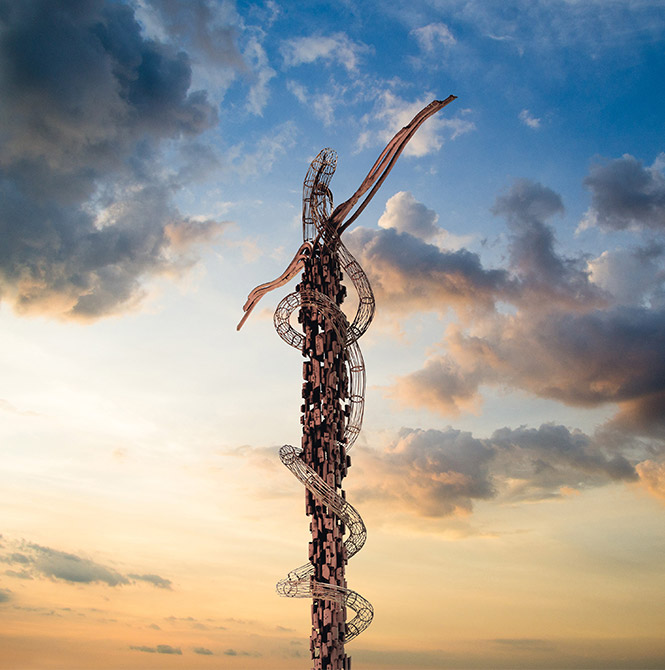
The Bible mentions that when the Israelites departed from Almon-diblathaim, they camped in the Abarim Mountains towards Nebo, and that the people of Reuben were the ones who built the city. In the ninth century BC, King Mesha seized the city of Nebo, destroyed its inhabitants, and destroyed its altar, and the city became a Moabite. Ancient ruins from the fifth century were found in the city, including churches, residences, tombs and contemporary ones, which prove that it was a prosperous Christian city after the end of the era of persecution.

The city of Nebo is located in the southeast of Mount Nebo, where Moses saw the Promised Land and did not enter it, which is called today the city of Nebo - Khirbet al-Mukhayyat. It is located on the top of a mountain and is surrounded by valleys on all four sides.
It is mentioned in the Bible when the Israelites departed from Almon-diblathaim, that they camped in the mountain of the Abarim towards Nebo, and that the people of Reuben were the ones who built the city. In the ninth century BC, King Mesha took over the city of Nebo, destroyed its inhabitants, and destroyed its altar. The city became a Moabite.
Historians did not mention the city of Nebo after the Bible, but ancient ruins from the fifth century of churches, dwellings, tombs and presses of wine and oil were found, which reveal to us that the city was a prosperous Christian, as Christianity spread in it in an early era, and Christian groups built there Many churches after the end of the era of persecution.
The Church of Saints Amos and Kazisios is one of the oldest churches in Nebo, which dates back to the fourth century AD, and is located on the southern slope of Wadi El-Afarit, and today it is among the village’s houses. The people of the village used many of its stones to build their homes. A monastery was built next to this church, and its floor was decorated with mosaics that depicted the scenes of social life at that time. This church was called the Church of Priest John, because this priest had built it with the help of the mosaic artist, the monk Julianos.
The Church of St. Georgios and the small monastery next to it are located in the upper part of the city (the Capitol). The floor of the church and the monastery was furnished with mosaics by the artists Noam, Kyriakos and Thomas in 536 AD, with donations from the families of Kutsa and Ammonios, for the relief of the soul of John Ben Ammonius, whose image we find it in the mosaic.
As for the Church of Saints Lot and Procopius, it is located north of the Capitol, within the city walls, and today it is covered by a rectangular building in order to maintain the mosaic rug in it, which dates back to the middle of the sixth century. Honoring Lot, the father of the Moabites, spread in the Dead Sea region in the early generations of Christianity. As for Procopius, he is a well-known holy martyr who was martyred in Caesarea in the year 303. We find in the mosaic writings in this church prayers for these saints, as the donors to build churches were asking for mercy and blessings for themselves and for those they love.